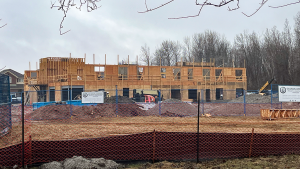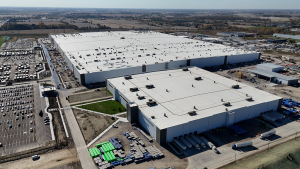It’s no industry secret that construction has always faced labour challenges and will continue to do so well into the future.
According to BuildForce Canada’s 2025–2034 Construction and Maintenance Looking Forward report, meeting the industry’s near- and long-term labour market demand will require a combination of strategies that include increasing the recruitment and training of youth, and looking to traditionally underrepresented groups, such as women, Indigenous people and newcomers to Canada.
The Daily Commercial News has looked at the numbers, breaking out the various levels of representation among these groups nationally and for each province.
It should be noted employment projections by BuildForce were developed with industry input prior to the emergence of trade tensions between Canada and the United States.
THE NATIONAL OUTLOOK
- In 2023, there were approximately 217,700 women employed in Canada’s construction industry. Of them, 29 per cent worked directly in onsite construction. However, as a share of the total 1.21 million tradespeople employed in the industry, women accounted for just five per cent of the onsite construction workforce.
- Indigenous people accounted for 5.2 per cent of Canada’s construction labour force in 2023.
ALBERTA
- New registrations in Alberta’s apprenticeship programs increased by nearly 50 per cent in 2023.
- In 2024, there were approximately 39,140 women employed in Alberta’s construction industry. Of them, 32 per cent worked onsite. Overall, women made up seven per cent in 2024 of the total workforce.
- In 2023, Indigenous people represented 6.6 per cent of Alberta’s construction labour force.
B.C.
- New registrations in British Columbia’s 25 largest construction trades increased by 36 per cent in 2023 as the reintroduction of skilled trade certification in the province led to unprecedent growth.
- In 2024, there were approximately 30,700 women employed in British Columbia’s construction industry. Of them, 35 per cent worked directly in onsite construction. Of the 185,600 tradespeople employed in the industry in 2024, women made up six per cent.
- In 2023, Indigenous workers accounted for 6.7 per cent of the province’s construction workforce.
ONTARIO
- In 2023, new registrations across Ontario’s 30 largest construction trade programs rose by 10 per cent compared to the previous year, setting a record for the number of new apprentices registered in the province.
- In 2024, there were approximately 79,410 women employed in Ontario’s construction industry. Of them, 28 per cent worked onsite. However, women made up just five per cent of the total tradespeople in 2024.
- In 2023, Indigenous people accounted for 3.4 per cent of Ontario’s construction labour force.
QUEBEC
- In 2023 new registrations in the 26 largest construction programs saw a decline.
- In 2024 there were approximately 45,360 women employed in Quebec’s construction industry, of which 24 per cent worked onsite. Of the 224,300 tradespeople employed in the industry, women made up five per cent.
- In 2023 Indigenous people accounted for just 1.7 per cent of the provincial labour force and three per cent of the construction workforce.
MANITOBA
- New registrations in Manitoba’s 17 largest construction-apprenticeship programs rose by 18 per cent in 2023 to reach a record high.
- In 2024, there were 5,960 women employed in Manitoba’s construction industry. Of them, 49 per cent worked onsite. Women made up seven per cent of the entire onsite workforce in 2024.
- In 2023, Indigenous people accounted for 17.7 per cent of Manitoba’s construction workforce, which is not only the highest share of Indigenous people among all provinces, but also the highest share in the province’s history.
SASKATCHEWAN
- In 2023, new registrations increased by nearly 30 per cent from the previous year, marking the highest number of new registrants since 2014.
- In 2024, there were approximately 4,090 women employed in Saskatchewan’s construction industry. Of them, 44 per cent worked onsite. Of the total tradespeople, women made up five per cent in 2024.
- In 2023, Indigenous people represented 12.4 per cent of Saskatchewan’s construction labour force.
NEWFOUNDLAND AND LABRADOR
- New registrations in Newfoundland and Labrador’s 11 largest construction trade programs increased by 22 per cent in 2023, compared to 2022 levels.
- In 2024, there were approximately 2,130 women employed in Newfoundland and Labrador’s construction industry. Of them, 12 per cent worked onsite. They made up just two per cent of the entire workforce in 2024.
- In 2023, Indigenous people represented 12 per cent of Newfoundland and Labrador’s construction labour force – more than the 9.6 per cent represented in the total provincial labour force.
NOVA SCOTIA
- New registrations in Nova Scotia’s 20 largest construction trades reached a record high in 2023, increasing by 73 per cent compared to 2022.
- In 2024, there were approximately 3,870 women employed in Nova Scotia’s construction industry. Of them, 24 per cent worked onsite. Women made up three per cent of the trades workforce in 2024.
- In 2023, Indigenous people accounted for approximately five per cent of Nova Scotia’s construction labour force.
NEW BRUNSWICK
- New registrations in New Brunswick’s 17 largest construction apprenticeship programs increased by 14 per cent year over year in 2023.
- In 2024, there were approximately 3,590 women employed in New Brunswick’s construction industry. Of them, 21 per cent worked on site. Overall women accounted for three per cent of the 2024 trades workforce.
- In 2023, Indigenous people represented 2.6 per cent of New Brunswick’s construction labour force.
PRINCE EDWARD ISLAND
- New registrations reached a record level in 2023, driven by increased intakes in the carpenter, construction electrician, and welder trade programs.
- In 2024, there were approximately 910 women employed in Prince Edward Island’s construction industry, an increase of more than 300 compared to 2023. Of them, 36 per cent worked onsite. In total women made up five per cent in 2024.
In 2021, Indigenous people accounted for approximately three per cent of Prince Edward Island’s construction labour force. That figure was more than double the share reported in 2016, and higher than the share represented in the overall provincial labour force in 2021.












Recent Comments